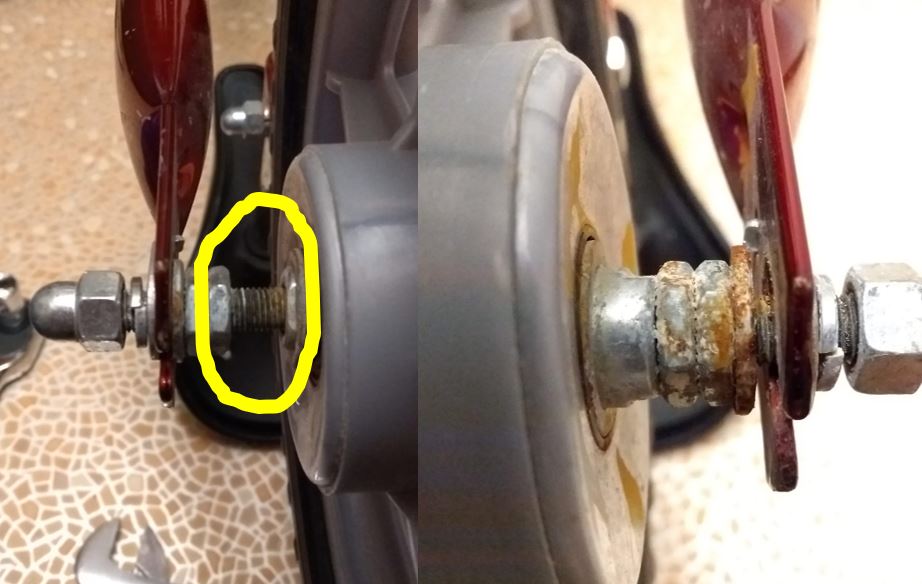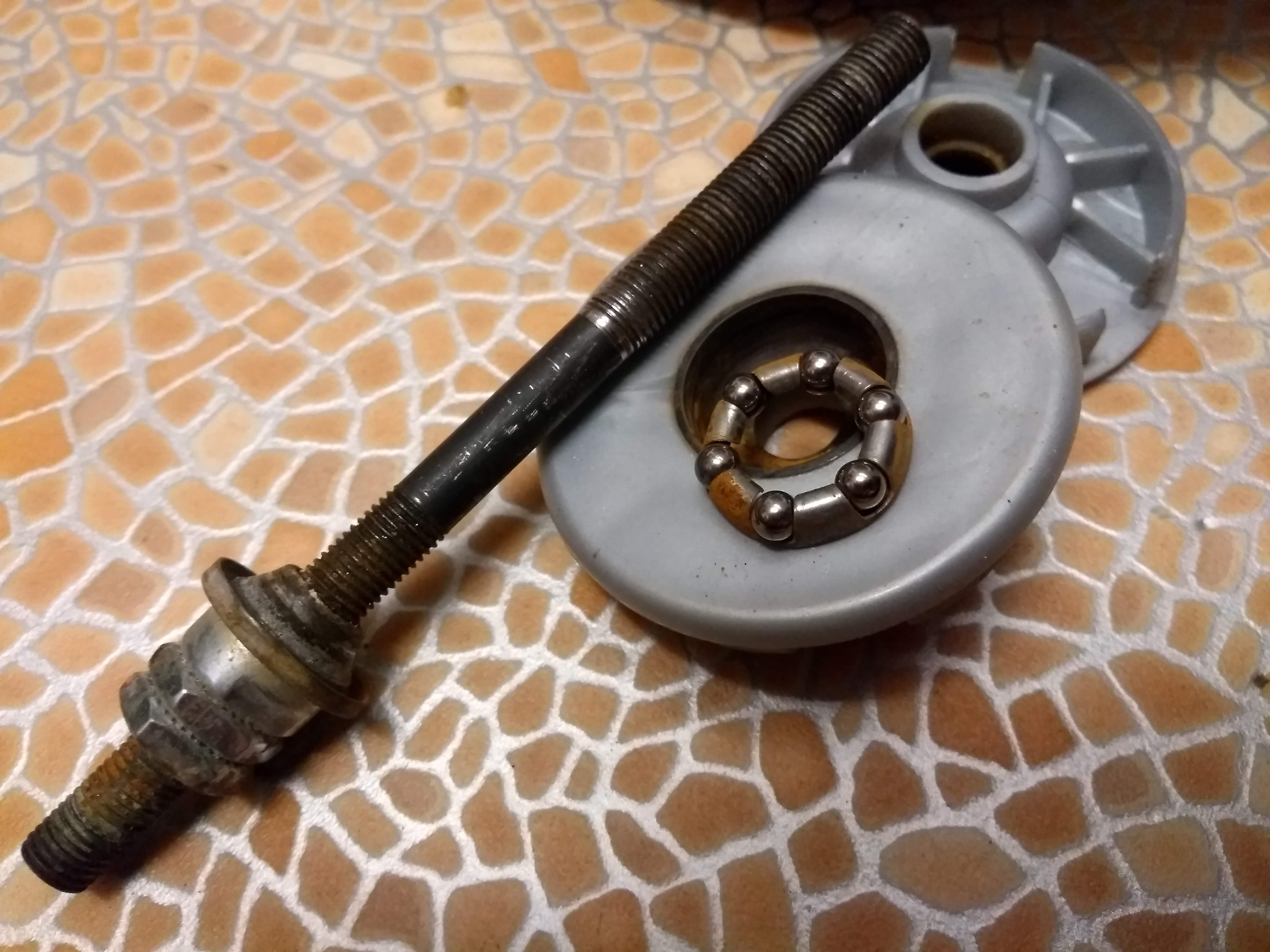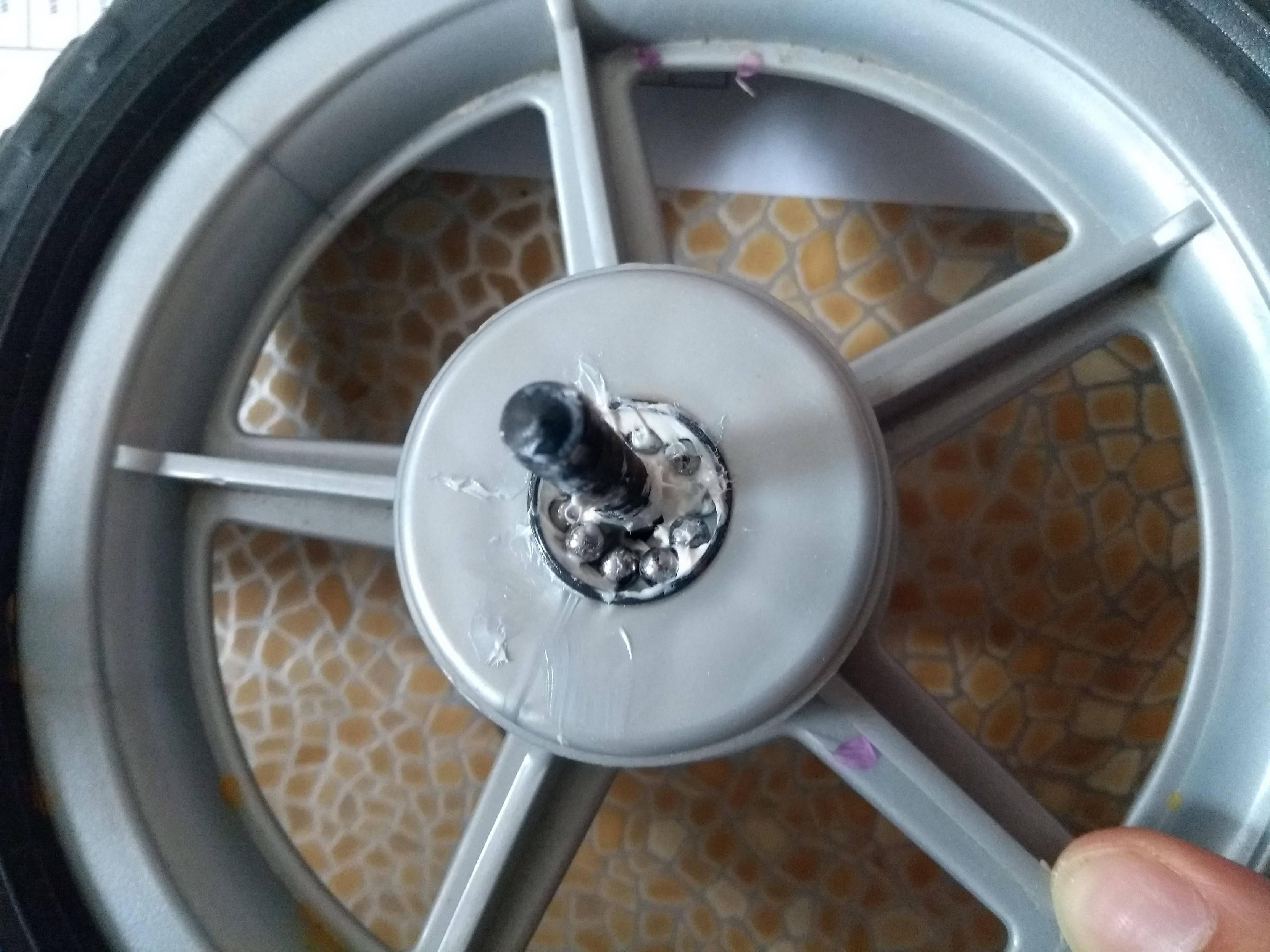Our 4yo is not yet fully comfortable on her next bike, so she's been riding her Chicco Red Bullet to school - until the bearing packed up on her back wheel today (has she been doing stunts or what?). I'm really impressed it's the bearing that gave and none of the plastic parts, because the bearing might actually be the easiest to repair. We might just try and turn this into an opportunity to encourage her to switch to the new bike for good, but let's get to the actual questions:
Can I use this 7-ball bearing as replacement for the damaged 6-ball bearing? The caliper gauge is in a cupboard in the girls' bedroom, so I can't get to it before tomorrow night now, but I took some rough dims:
- Outside diameter (=internal diameter of socket in grey plastic plate) 20 mm
- Cone rolling surface diameter range 11 to 14 mm
- Bearing width 5 to 6 mm - but I doubt this matters as there is plenty of room for adjustment.
- nuts are 13 mm (must be m8 axle then) So the dims generally match and the difference seems to be only in the number of balls. Is there a reason why the bearing in the link would not be a suitable replacement?
Is there an issue related to the bearing failure that's causing the wheel to be offset?
Please see the photos below, clearly it's not all in the best of conditions, but I guess I didn't appreciate even balance bikes need proper care.
The damaged bearing is on the rider's RHS (highlighted in the photo). I can't remember if it's always been the case that the wheel is off-centre and there is a lot of axle visible on rider's RHS side but none on rider's LHS. I doubt the cones could "travel" gradually (one tightens, the other loosens) in usage without a substantial change to how tight the bearing is. And I can't imagine the bearing failed because it was overtightened: if it was overtightened, I would expect the plastic "plate" to crack. I think the bearing failed due to rider weight (would it be called radial load?). NB I loosened the cap/end nuts before taking this photo but not any of the remaining nuts.
 Overview of wheel construction
Overview of wheel construction
 Overview of bearing construction:
Overview of bearing construction:
 Damaged bearing cage (by the way, it's interesting it's called a cage - my impression is that a much more appropriate name would be bearing crown or nest - these are the terms I googled first). I also find it strange how the six "wings" on the damaged side have different shapes and I wonder how much that has to do with the load (they all look even and equal on the good side).
Damaged bearing cage (by the way, it's interesting it's called a cage - my impression is that a much more appropriate name would be bearing crown or nest - these are the terms I googled first). I also find it strange how the six "wings" on the damaged side have different shapes and I wonder how much that has to do with the load (they all look even and equal on the good side).


I know it's a lot of photos but I don't want to put a new bearing on, only to find that a stronger new bearing causes the failure of a part which is harder to replace!



